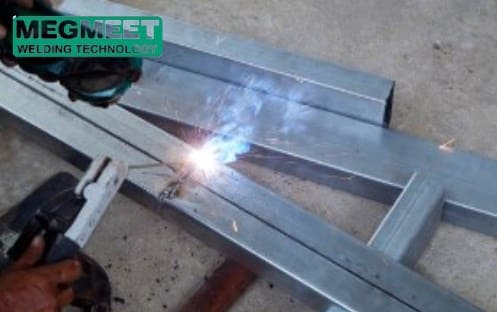Aluminum welding is a crucial skill for welders across various industries, offering versatility and durability in various applications. However, MIG (Metal Inert Gas) welding aluminum comes with its own unique set of challenges. In this comprehensive guide, brought to you by Megmeet-welding, we will explore the common challenges faced when MIG welding aluminum, provide valuable tips to overcome them, and empower you to achieve successful aluminum welds with confidence.

I. Common Challenges of Aluminum MIG Welding.
MIG welding aluminum presents unique challenges that require special attention and expertise to overcome. Understanding these common challenges is essential for welders to achieve successful aluminum welds. Below are some of the most prevalent challenges encountered when MIG welding alu:
High Heat Conductivity: One of the primary challenges of MIG welding aluminum is its high thermal conductivity. Aluminum dissipates heat rapidly, making it difficult to achieve proper penetration and fusion without overheating the workpiece.
Oxidation: Aluminum readily forms an oxide layer when exposed to air, which can interfere with the welding process. Contaminants such as oil, grease, or dirt on the surface exacerbate oxidation, leading to poor weld quality and porosity.
Porosity: Porosity, or the presence of gas pockets in the weld, is a common issue in aluminum welding. It occurs when the shielding gas fails to adequately protect the weld pool from atmospheric contamination, resulting in weak and brittle welds.
Burn-Through: Due to its lower melting point compared to steel, aluminum is more prone to burn-through, especially when welding thin materials. Burn-through happens when too much heat is applied to the workpiece, causing it to melt excessively and create holes in the weld.
Read 3 Common Types of Welding Techniques Used for Aluminum.
II. Tips to Successfully Alu MIG Welding.
MIG welding aluminum requires special techniques and considerations to achieve successful welds. Here are some valuable tips to help you master the art of MIG welding aluminum:
1) Cleanliness is Key:
Before welding, ensure that the aluminum surfaces are clean and free of contaminants. Use a stainless steel wire brush or Megmeet's specialized aluminum cleaner to remove any oxide layers, oil, grease, or dirt.
2) Proper Equipment Setup:
Invest in high-quality MIG welding equipment specifically designed for aluminum welding, including a MIG welding machine with the capability to weld aluminum and a spool gun or push-pull system. Set up your equipment according to Megmeet's recommendations for aluminum welding, adjusting wire feed speed, voltage, and amperage settings as needed.
3) Choose the Right Wire and Gas:
Select the appropriate aluminum welding wire for your application, such as Megmeet's premium ER4043 or ER5356 wires. Use pure argon as the shielding gas for MIG welding aluminum, as it provides excellent arc stability and penetration.
4) Control Heat Input:
Achieving proper heat control is crucial when welding aluminum to prevent burn-through and ensure proper penetration. Maintain a short stick-out distance (around 3/8 to 1/2 inch) to minimize heat buildup and ensure good arc stability.
5) Use a Push Technique:
Employ a push technique rather than a pull technique when welding aluminum to ensure adequate gas coverage and prevent porosity. Push the weld puddle along the joint, directing the heat into the workpiece for optimal results.
6) Utilize a Weaving Motion:
Implement a weaving motion or stitch welding technique to distribute heat evenly across the weld joint and prevent excessive heat buildup. This technique helps reduce distortion and promotes better fusion of the weld.
7) Practice and Patience:
Mastering aluminum welding with MIG takes practice and patience. Start with Megmeet's premium aluminum welding materials and practice on scrap pieces of aluminum to hone your technique and familiarize yourself with the process. Be patient and persistent, and don't be discouraged by initial setbacks.
III. Conclusion
MIG welding aluminum presents unique challenges, but with the right techniques and equipment from Megmeet, these challenges can be overcome. By prioritizing cleanliness, proper equipment setup, control over heat input, and patience in your welding process, you can achieve successful aluminum welds that meet the highest standards of quality and durability. Empower yourself with Megmeet's expertise and premium welding solutions to master aluminum welding and elevate your welding capabilities to new heights.
Related articles:
1. Welding Aluminum vs. Welding Steel: A Complete Comparison
2. MIG and TIG Guidelines for Aluminum Welding
3. Pulsed MIG Welding Aluminum and Stainless Steel
4. Advantages of Utilizing Pulsed MIG Welding for Aluminum
5. Why is AC current preferred in aluminum welding?
FAQs of MIG Welding Aluminum
1. What type of aluminum welding wire should I use?
2. Why is cleanliness important when welding aluminum?
3. Can I use a regular MIG welding machine for aluminum welding?
4. How can I prevent porosity in aluminum welds?
5. What is the importance of heat control in aluminum welding?




